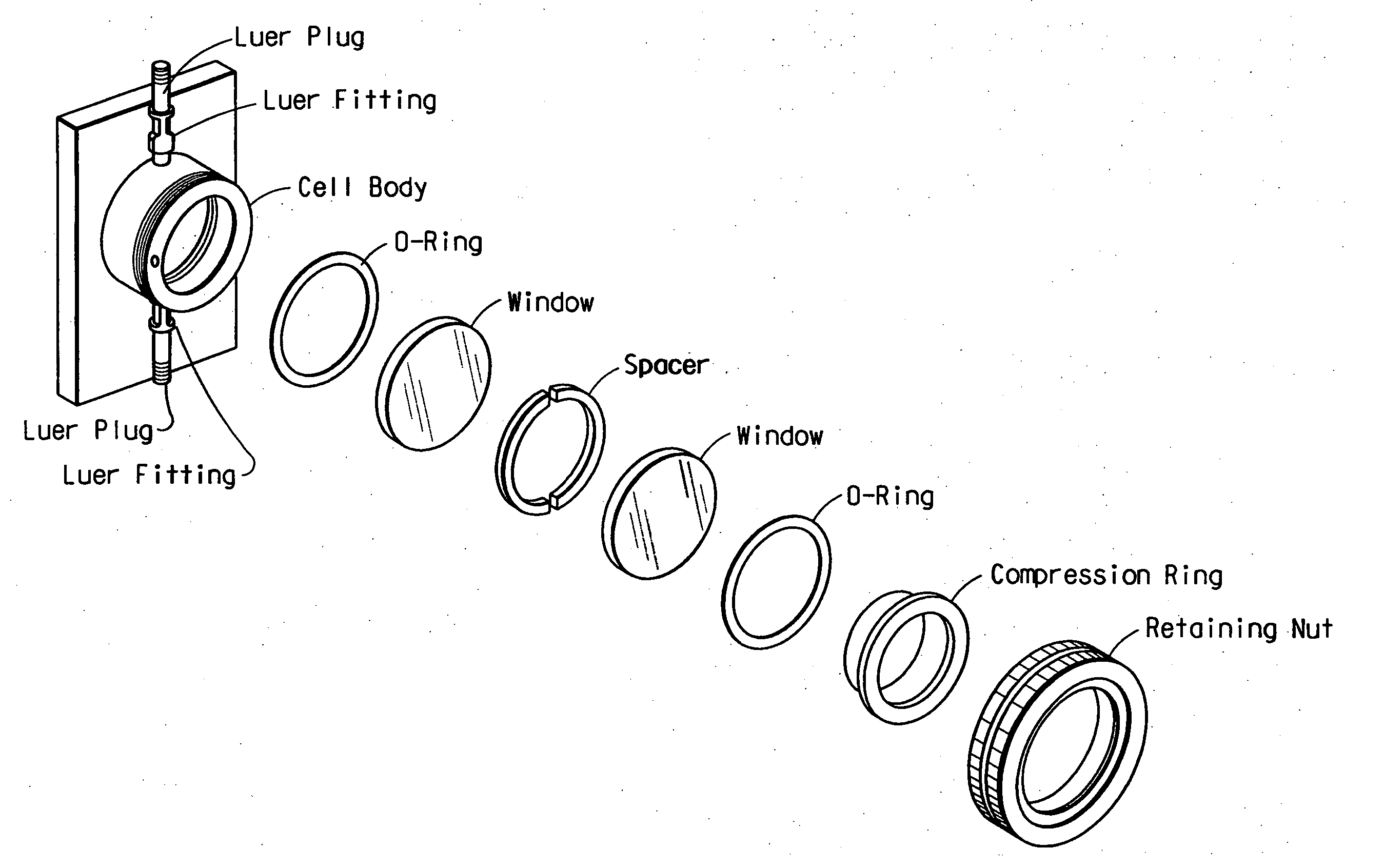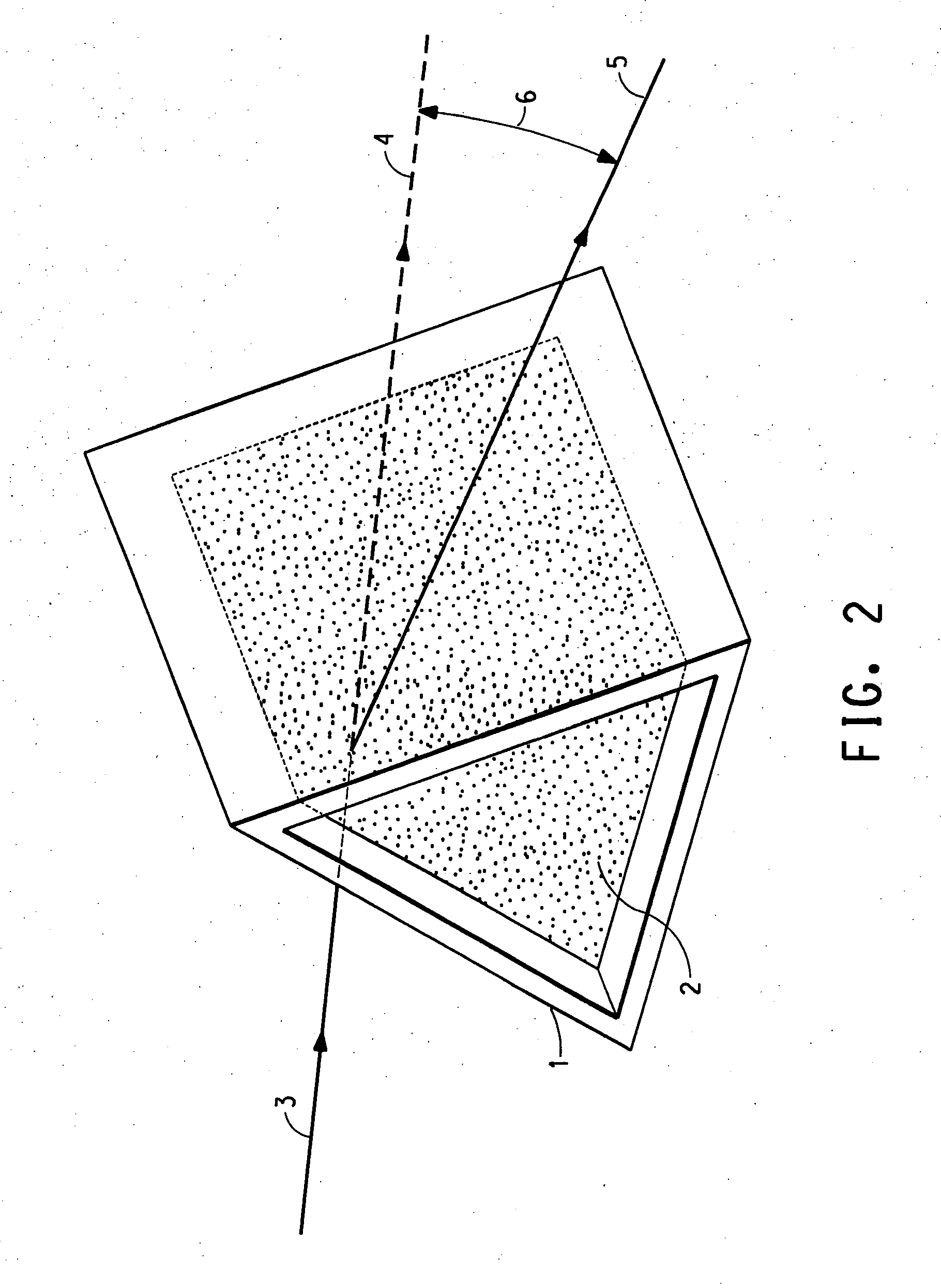Use of highly purified hydrocarbons in vacuum ultraviolet applications
a technology of ultraviolet light and high-purification hydrocarbons, applied in the field of alkanes, can solve the problems of inability to find liquids that are sufficiently transparent to be practical, liquids with low boiling points similarly can have an undetectable low refractive index, and need a pressure vessel for containmen
- Summary
- Abstract
- Description
- Claims
- Application Information
AI Technical Summary
Benefits of technology
Problems solved by technology
Method used
Image
Examples
example 1
[0117] A. The absorbance of as received cyclohexane (Fluka catalog # 28935, purity └ 99.5% by GC, b.p. 80-81° C.). According to the relative transmission method hereinabove, was found to be 4.78 cm−1 at 193 nm.
[0118] B. Molecular sieves (3A) were dried for two hours under air at 350° C. About 10 grams of the so dried sieves were mixed with 20 ml of the as-received cyclohexane. After filtering the sieves off under N2 in a glove box, the absorbance of the thus treated cyclohexane was found to be 2.14 cm−1 by the relative transmission method at 193 nm.
[0119] C. Silica gel (Aldrich catalog number 24,982-3, type 3, 8 mesh) was dried at 500° C. for two hours under air. About 10 ml of the so dried silica gel was added to 20 ml of the as received cyclohexane. After filtering the silica gel off under N2 in a glove box, the absorbance of the thus treated cyclohexane was found to be 0.14 cm−1 by the relative transmission method at 193 nm.
[0120] D. The index of refraction of cyclohexane, was...
example 2
[0122] A. The absorbance of as received cyclopentane (Fluka (catalog # 29682, purity └ 99.0% by GC, b.p. 50° C.) according to the relative transmission method hereinabove was found to be 0.42 cm−1 at 193 nm.
[0123] B. About 10 g of the dried molecular sieves (3A) prepared in Example 1 were mixed with 20 ml of the as-received cyclopentane. After filtering the sieves off under N2 in a glove box, the absorbance of the thus treated cyclopentane was found to be 0.37 cm−1 by the relative transmission method at 193 nm.
[0124] C. About 10 ml of dried silica gel as provided in Example 1, were combined with 20 ml of the as received cyclopentane. After filtering the silica gel off under N2 in a glove box, the absorbance of the thus treated cyclohexane was found to have an absorbance of 0.30 cm−1 by the relative transmission method at 193 nm.
[0125] D. The index of refraction of cyclopentane was measured using the minimum deviation prism method discussed above. The index of refract...
example 3
[0126] The apparatus employed for performing contact photolithography at 193 nm is depicted in FIG. 5. It consisted of a a193 nm Lambda-Physik (Ft. Lauderdale, Fla.) Optex ArF Excimer laser light source, a model D200 Scientech (5649 Arapahoe Avenue, Boulder, Colo. 80303) laser power meter, and an immersion fluid reservoir, all mounted on a 24″ (61 cm)×18″ (46 cm) optical table (Newport Corp., Irvine Calif.), positioned in a nitrogen flushed Nexus Dry Box (VAC Industries, Hawthorne Calif.) equipped with a trace oxygen analyzer and moisture probe (VAC Industries).
[0127] Test specimens were submerged 1 mm deep in the selected alkane liquid of the invention in the reservoir as shown in FIG. 6A. The laser beam traversed a distance of approximately 12″ before being directed vertically downward towards the target surface as shown in FIGS. 4 and 5. The target surface was a 100 mm diameter×0.5 mm thick silicon wafer mounted in a an aluminum holder. The holder was mounted on a rail so that t...
PUM
| Property | Measurement | Unit |
|---|---|---|
| wavelength | aaaaa | aaaaa |
| wavelength range | aaaaa | aaaaa |
| wavelength | aaaaa | aaaaa |
Abstract
Description
Claims
Application Information
 Login to View More
Login to View More - R&D
- Intellectual Property
- Life Sciences
- Materials
- Tech Scout
- Unparalleled Data Quality
- Higher Quality Content
- 60% Fewer Hallucinations
Browse by: Latest US Patents, China's latest patents, Technical Efficacy Thesaurus, Application Domain, Technology Topic, Popular Technical Reports.
© 2025 PatSnap. All rights reserved.Legal|Privacy policy|Modern Slavery Act Transparency Statement|Sitemap|About US| Contact US: help@patsnap.com



